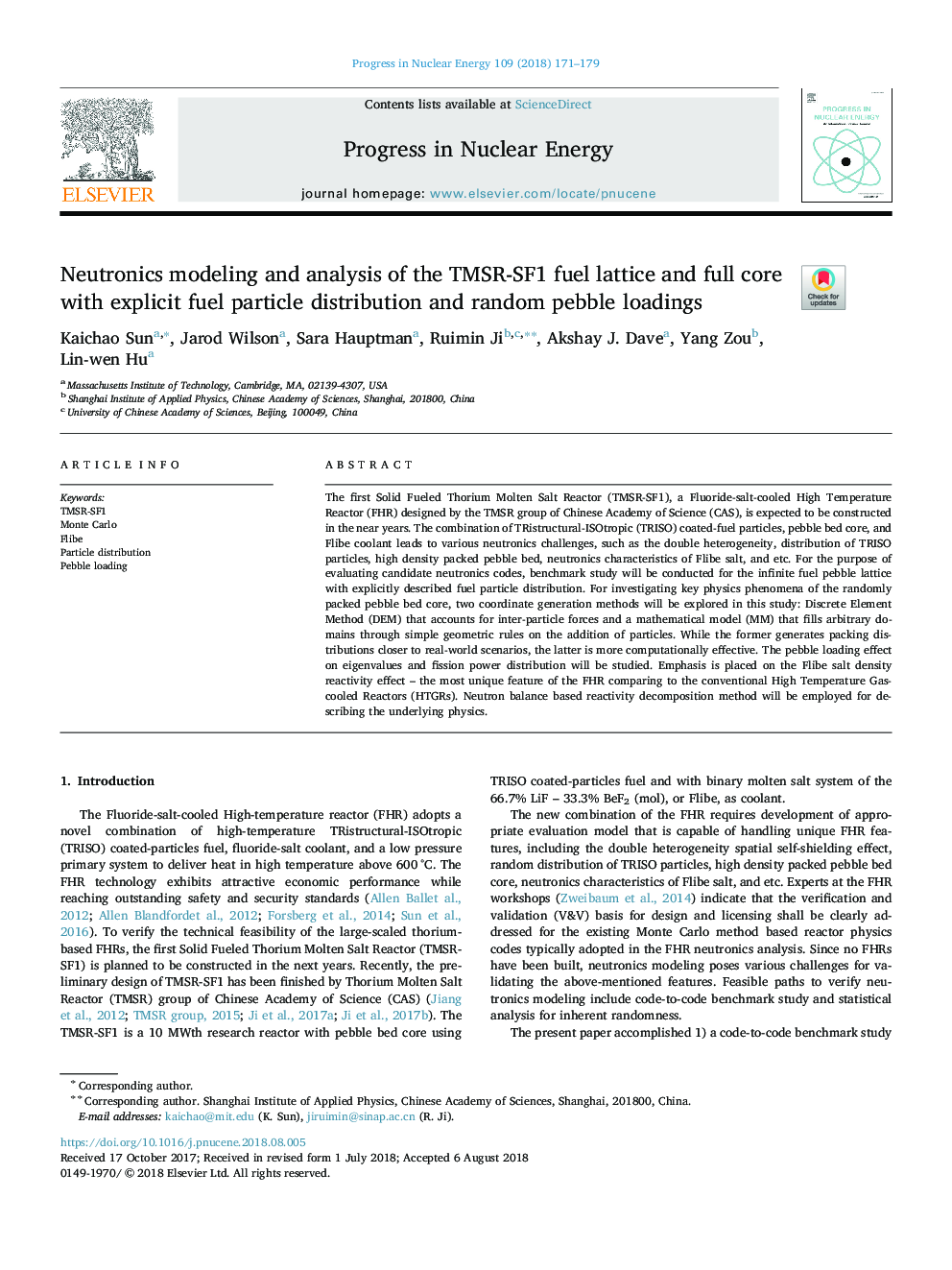| Article ID | Journal | Published Year | Pages | File Type |
|---|---|---|---|---|
| 8084050 | Progress in Nuclear Energy | 2018 | 9 Pages |
Abstract
The first Solid Fueled Thorium Molten Salt Reactor (TMSR-SF1), a Fluoride-salt-cooled High Temperature Reactor (FHR) designed by the TMSR group of Chinese Academy of Science (CAS), is expected to be constructed in the near years. The combination of TRistructural-ISOtropic (TRISO) coated-fuel particles, pebble bed core, and Flibe coolant leads to various neutronics challenges, such as the double heterogeneity, distribution of TRISO particles, high density packed pebble bed, neutronics characteristics of Flibe salt, and etc. For the purpose of evaluating candidate neutronics codes, benchmark study will be conducted for the infinite fuel pebble lattice with explicitly described fuel particle distribution. For investigating key physics phenomena of the randomly packed pebble bed core, two coordinate generation methods will be explored in this study: Discrete Element Method (DEM) that accounts for inter-particle forces and a mathematical model (MM) that fills arbitrary domains through simple geometric rules on the addition of particles. While the former generates packing distributions closer to real-world scenarios, the latter is more computationally effective. The pebble loading effect on eigenvalues and fission power distribution will be studied. Emphasis is placed on the Flibe salt density reactivity effect -- the most unique feature of the FHR comparing to the conventional High Temperature Gas-cooled Reactors (HTGRs). Neutron balance based reactivity decomposition method will be employed for describing the underlying physics.
Related Topics
Physical Sciences and Engineering
Energy
Energy Engineering and Power Technology
Authors
Kaichao Sun, Jarod Wilson, Sara Hauptman, Ruimin Ji, Akshay J. Dave, Yang Zou, Lin-wen Hu,
